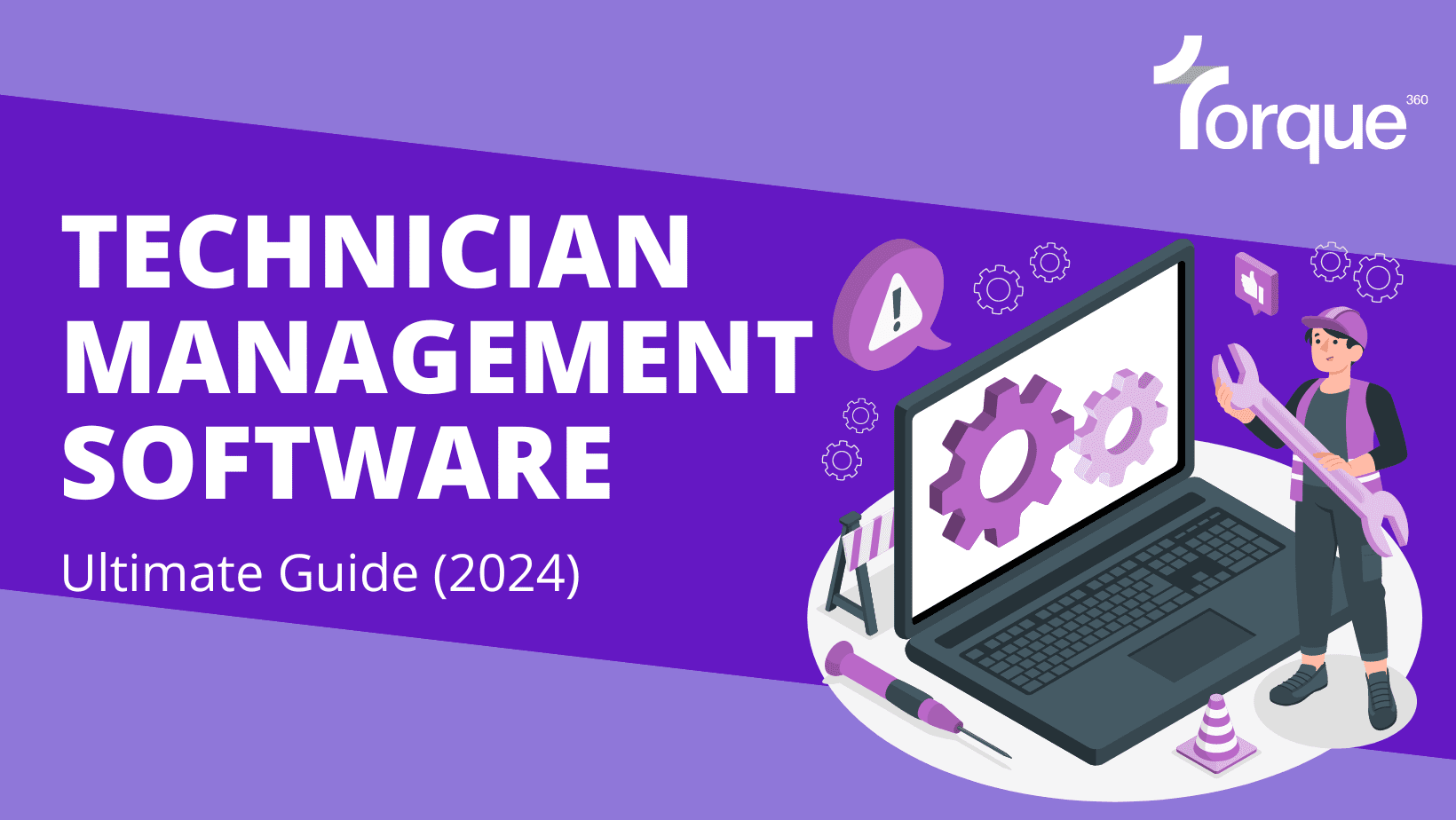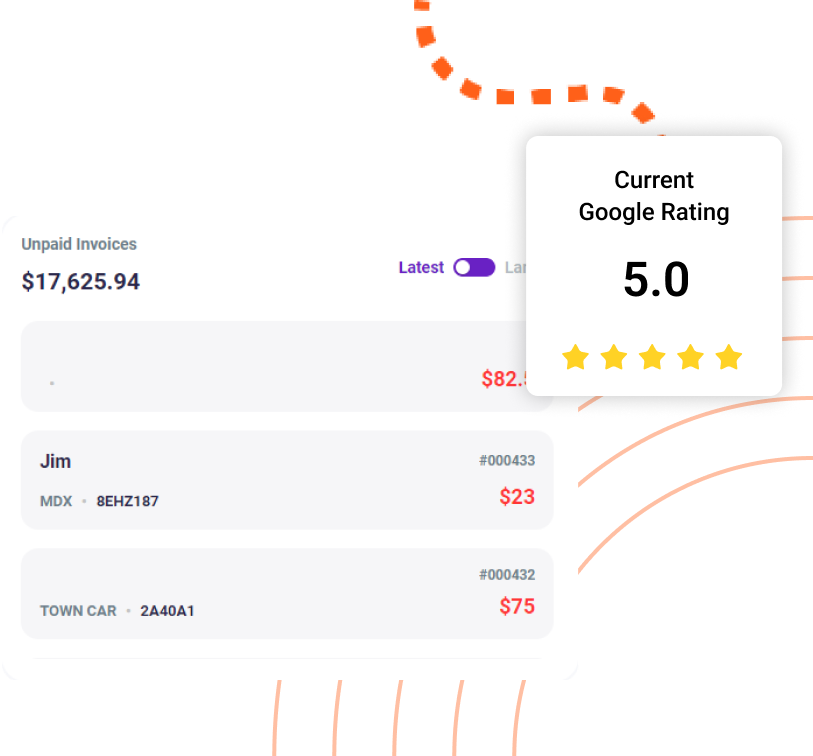In today’s tech-happy world, about 9 out of 10 customers are rooting for technicians who are up-to-date with modern technology. And get this – almost as many customers are cool to pay more for that tech-savvy touch.
Managing your technicians like a boss isn’t just a good idea.
It’s a game-changer that can crank up customer happiness and give your business a growth spurt.
With the advancement of technology, using the right technician management software can be a game changer. It aims to improve the efficiency of technician workflows, reducing manual processes and minimizing errors.
In this guide, we will give you proper details on technician management software so that you can choose the right tool.
Understanding Technician Management Software
Overview of Technician Management Software
Technician management software is a tool used in workshops to optimize and streamline the management of technicians, their activities, and their performances.
Successful implementation of technician management software might lead to a 20-30% improvement in operational efficiency and a 25-35% reduction in downtime.
This tool provides a centralized platform for managing and overseeing all aspects of field service operations. It aims to improve the efficiency of technician workflows, reducing manual processes and minimizing errors. Furthermore, it offers real-time visibility into field operations, enabling better decision-making and resource allocation. This tool focuses on enhancing customer satisfaction by ensuring timely and effective service delivery.
Key Features and Functionalities of Technician Management Software
Scheduling and Dispatching
- Meeting Deadlines: Efficiently schedule tasks and ensure timely completion.
- Easily Check Clock In/Out Time: Monitor work hours for accuracy and compliance.
- Stay Connected With Your Team: Facilitate seamless communication among team members.
- When Done, Notify: Enable technicians to notify completion instantly.
Work Order Management
- Real-Time Reports: Access up-to-the-minute information on ongoing work orders.
- Calculate Work Hours: Automatically calculate the time spent on each task.
- Track Productivity: Monitor the progress and productivity of each technician.
- Monitor Your Earnings: Gain insights into earnings through comprehensive tracking.
Asset Tracking
- Keep Up With Every Task: Effectively track and manage all assigned tasks.
- Never Lose a Job Again: Ensure that no job or asset is overlooked or misplaced.
- Catch Every Update: Stay informed about the status and location of assets.
- Assign Tasks: Easily assign tasks to specific technicians or teams.
Communication Tools
- Meet Deadlines: Facilitate communication to ensure tasks are completed on time.
- Stay Connected With Your Team: Foster collaboration and quick information exchange.
- Notify When Done: Enable technicians to instantly communicate task completion.
Reporting and Analytics
- Manage Everything Within Software: Centralize all data and manage tasks within the software.
- Do Digital Inspections: Conduct inspections digitally and streamline the reporting process.
- Add Technician Notes: Allow technicians to add notes for comprehensive documentation.
Benefits of Using Technician Management Software
Increased Efficiency and Productivity
- Streamlined Task Assignment: Efficient scheduling and dispatching features ensure tasks are assigned promptly, reducing idle time and enhancing overall workflow.
- Optimized Work Order Management: Automating work order processes reduces manual errors, minimizes delays, and accelerates task completion.
- Real-Time Monitoring: Continuous tracking and reporting tools enable managers to monitor task progress in real-time, allowing for quick adjustments and optimization.
- Time Tracking and Reporting: Precise clock in/out functionalities provide accurate data on work hours, aiding in performance evaluation and resource allocation.
Improved Communication and Collaboration
- Enhanced Team Connectivity: Communication tools foster seamless interaction among team members, improving coordination and response times.
- Instant Notifications: Technicians can easily notify their completion of tasks, keeping everyone in the loop and facilitating swift communication.
- Task Assignment and Updates: Efficiently assign tasks and receive updates, ensuring that all team members are aligned with project requirements and timelines.
Enhanced Customer Satisfaction
- Timely Service Delivery: Efficient scheduling and dispatching contribute to on-time service delivery, meeting customer expectations and enhancing satisfaction.
- Transparent Communication: Improved communication tools keep customers informed about task progress, leading to better transparency and trust.
- Digital Inspections and Documentation: Streamlined processes like digital inspections and technician notes contribute to thorough and accurate documentation, ensuring a higher quality of service.
Cost Savings and Resource Optimization
- Efficient Resource Allocation: Real-time analytics assist in optimizing resource allocation, preventing overuse or underutilization of workforce and equipment.
- Reduced Downtime: Swift task assignment and real-time monitoring minimize downtime, leading to increased operational efficiency and cost savings.
- Data-Driven Decision Making: Reporting and analytics tools provide valuable insights for informed decision-making, optimizing processes, and reducing unnecessary expenditures.
Selecting the Right Technician Management Software
Assessing Organizational Needs
- Identify Core Requirements: Conduct a thorough analysis of your organization’s technician management needs, considering factors such as the size of your workforce, the complexity of tasks, and specific industry requirements.
- Collaborative Evaluation: Involve key stakeholders, including technicians, managers, and IT professionals, to gather diverse perspectives on essential features and functionalities.
- Future Growth: Anticipate future organizational growth and technological advancements to ensure the selected software aligns with your long-term business objectives.
Key Considerations in Software Selection
Scalability
Ensure that the software can scale alongside your organization’s growth without compromising performance.
Why it Matters: Scalability accommodates an expanding workforce, additional assets, and increased task complexity.
Integration Capabilities
Verify the software’s ability to integrate seamlessly with existing tools, such as CRM systems, accounting software, and other relevant applications.
Integration facilitates data flow across different departments, reducing manual data entry and minimizing errors.
User Interface and Experience
Choose software with an intuitive and user-friendly interface to enhance adoption and reduce the learning curve for technicians and managers.
Customization Options
Select a platform that allows for customization to adapt to your organization’s unique processes and requirements.
Customization options enable the adjustment of workflows, ensuring the software aligns with your specific technician management needs.
Mobile Accessibility
Choose software that offers robust mobile accessibility, allowing technicians to manage tasks, update progress, and communicate while in the field.
Mobile accessibility enhances responsiveness, providing real-time updates and ensuring that crucial information is accessible anytime, anywhere.
Implementation and Integration
Planning for Implementation
1. Assessment of Organizational Needs:
Identify specific requirements and challenges within the organization related to technician management. Understand the unique workflow, processes, and goals that the software should address.
2. Goal Setting:
Clearly define the goals and objectives of implementing the Technician Management Software. Set measurable targets to evaluate the success of the implementation.
3. Resource Allocation:
Allocate necessary resources, including budget, time, and personnel, for the implementation process. Ensure that the selected software aligns with the organization’s overall strategy.
4. Risk Assessment:
Identify potential risks and challenges that may arise during implementation. Develop contingency plans to mitigate risks and ensure a smoother rollout.
Onboarding and Training Processes
1. User Training Programs:
Develop comprehensive training programs for all users involved in the technician management process.
Provide hands-on training sessions to ensure users are proficient in utilizing the software.
2. Documentation:
Create user-friendly documentation, manuals, and tutorials for ongoing reference.
Establish a knowledge base for quick problem-solving and troubleshooting.
3. Feedback Mechanism:
Implement a feedback loop to gather input from users during and after the training.
Address any concerns or issues raised by users promptly to enhance the onboarding experience.
4. Gradual Rollout:
Consider a phased rollout approach to allow for gradual adaptation and minimize disruption to daily operations.
Monitor user feedback and performance during each phase for continuous improvement.
Integration with Existing Systems
1. Compatibility Assessment:
Evaluate the compatibility of the Technician Management Software with existing systems. Ensure seamless integration without causing disruptions or data loss.
2. Data Migration Plan:
Develop a plan for migrating existing data into the new system. Verify the accuracy of data migration and perform thorough testing.
3. API and Middleware Integration:
Utilize Application Programming Interfaces (APIs) and middleware solutions for smooth integration with other software applications. Confirm that data flows seamlessly between systems.
4. Customization and Scalability:
Ensure that the Technician Management Software can be customized to meet specific organizational needs. Plan for scalability to accommodate future growth and changes in the business environment.
Common Challenges and Solutions
Addressing Resistance to Change
1. Awareness and Communication:
Challenge: Employees may resist adopting new software due to unfamiliarity or fear of change.
Solution: Conduct comprehensive training sessions to raise awareness, emphasizing the benefits of the new Technician Management Software. Clear communication about the reasons behind the change can alleviate concerns.
2. User Involvement in Decision-Making:
Challenge: Resistance may arise if employees feel the change is imposed without their input.
Solution: Involve end-users in the decision-making process, gather feedback, and address concerns. This participatory approach can enhance acceptance and engagement.
3. Change Management Strategies:
Challenge: Lack of a structured change management plan can hinder successful adoption.
Solution: Implement a robust change management strategy, including communication plans, training programs, and support mechanisms. Proactively address concerns and provide ongoing assistance during the transition.
Overcoming Technical Issues
1. Integration Challenges:
Challenge: Compatibility issues with existing systems can disrupt workflow.
Solution: Prioritize software solutions with flexible integration capabilities. Work closely with IT teams to ensure a smooth integration process and address any compatibility issues promptly.
2. Data Migration Problems:
Challenge: Transferring data from legacy systems to the new software can result in data integrity issues.
Solution: Develop a comprehensive data migration plan, conduct thorough testing, and ensure data validation procedures are in place to maintain accuracy during the transition.
3. User Training and Proficiency:
Challenge: Inadequate training can lead to user errors and hinder the software’s effective use.
Solution: Provide comprehensive training programs for users at all levels. Offer ongoing support and resources to ensure users become proficient in utilizing the software’s features.
Ensuring Ongoing Support and Updates
1. Vendor Support:
Challenge: Lack of vendor support can lead to delays in issue resolution.
Solution: Choose software providers with a reputation for excellent customer support. Establish clear communication channels with the vendor and ensure they provide timely updates and patches.
2. Regular Software Updates:
Challenge: Outdated software may lack essential features and security patches.
Solution: Enforce a regular update schedule to keep the software current. Provide users with information on the benefits of updates, such as enhanced security, new features, and improved performance.
3. User Feedback Mechanisms:
Challenge: Users may encounter issues that go unreported, impacting overall system performance.
Solution: Establish feedback mechanisms to encourage users to report issues and provide suggestions. Regularly assess user feedback to identify areas for improvement and implement updates accordingly.
Future Trends in Technician Management Software
Technological Advancements Shaping the Industry
1. Artificial Intelligence (AI) Integration:
- Predictive Maintenance: AI algorithms can predict equipment failures before they occur, enabling proactive maintenance and minimizing downtime.
- Optimized Scheduling: AI-driven scheduling can dynamically adjust based on real-time factors, such as technician availability and traffic conditions.
2. Internet of Things (IoT) Integration:
- Enhanced Asset Tracking: IoT devices facilitate real-time tracking of assets, providing detailed insights into their usage, location, and condition.
- Remote Diagnostics: IoT-enabled devices allow technicians to diagnose and troubleshoot issues remotely, improving efficiency and reducing on-site visits.
3. Mobile Augmented Reality (AR):
- Remote Assistance: Technicians can use AR to receive remote guidance from experts, reducing the need for specialized on-site support.
- Training and Onboarding: AR can be utilized for immersive training experiences, enabling technicians to learn and onboard more effectively.
Emerging Features and Functionalities
1. Blockchain for Security and Transparency:
- Secure Documentation: Blockchain technology can enhance the security and transparency of technician notes, work orders, and other critical documentation.
- Streamlined Transactions: Smart contracts powered by blockchain can automate and secure transactions between stakeholders in the technician management process.
2. Predictive Analytics for Resource Optimization:
- Forecasting Workloads: Predictive analytics can analyze historical data to forecast future workloads, allowing businesses to optimize resource allocation.
- Dynamic Task Prioritization: Predictive analytics can dynamically prioritize tasks based on factors like urgency, complexity, and technician expertise.
3. Enhanced User Experience with Virtual Assistants:
- Voice-Activated Commands: Integration of virtual assistants and voice-activated commands can streamline task management, allowing technicians to perform actions hands-free.
- Natural Language Processing: Natural language processing capabilities can improve the user interface, making it more intuitive and user-friendly.
Industry Predictions and Expert Insights
Shift Towards Comprehensive Ecosystems:
Industry experts foresee a shift towards comprehensive ecosystems where technician management software seamlessly integrates with other business applications, creating a unified operational environment.
Focus on Sustainability:
Predictions indicate an increasing emphasis on sustainability within technician management software, with features designed to reduce environmental impact through optimized routes, energy-efficient scheduling, and eco-friendly practices.
Continuous Evolution of Cybersecurity Measures:
As technology evolves, experts predict a continuous evolution of cybersecurity measures within technician management software to address emerging threats and protect sensitive data.
Implementation Checklist
Step-by-Step Guide for Successful Implementation
1. Needs Assessment:
Conduct a thorough assessment of organizational needs and requirements. Identify specific pain points and challenges in existing technician management processes.
2. Vendor Selection:
Research and choose a reputable Technician Management Software provider. Ensure the selected software aligns with organizational goals and offers the necessary features.
3. Customization and Configuration:
Work closely with the software provider to customize the system according to organizational workflows. Configure user roles, permissions, and settings for optimal functionality.
4. Data Migration:
Plan and execute a smooth transition of existing data into the new software. Verify data accuracy and integrity after migration.
5. Training and Onboarding:
Develop a comprehensive training program for users at all levels. Conduct training sessions to ensure users are comfortable with the new software. Provide ongoing support during the initial implementation phase.
6. Pilot Implementation:
Implement the software on a smaller scale or in a specific department as a pilot. Gather feedback from users to identify any potential issues or improvements.
7. Feedback and Iteration:
Collect feedback from users during and after the pilot phase. Iteratively refine the implementation based on user input and experiences.
8. Full-Scale Deployment:
Roll out the software on a broader scale after the successful completion of the pilot phase.
Communicate changes to all stakeholders and ensure a smooth transition.
9. Monitoring and Evaluation:
Continuously monitor the system’s performance and address any issues promptly.
Evaluate the impact of the software on key performance indicators and adjust strategies accordingly.
10. Documentation:
Create documentation outlining software functionalities, processes, and troubleshooting steps. Ensure that users have access to clear and concise guides.
Best Practices for Maximizing Software Benefits
1. Continuous Training:
Provide ongoing training opportunities to keep users updated on new features and best practices. Foster a culture of continuous learning to maximize software proficiency.
2. Regular Software Updates:
Stay current with software updates and new releases. Schedule regular maintenance to ensure the system operates at its optimum.
3. User Engagement:
Encourage active participation and feedback from users. Foster a sense of ownership and responsibility among users for the successful use of the software.
4. Integration with Existing Systems:
Explore and implement integrations with other relevant tools or systems. Ensure seamless data flow between different software platforms.
5. Data Security Measures:
Implement robust security measures to protect sensitive data. Regularly audit and update security protocols to address evolving threats.
6. Performance Metrics Tracking:
Utilize reporting and analytics tools to track key performance metrics. Leverage data insights to identify areas for improvement and optimization.
7. Scalability Considerations:
Choose a software solution that can scale with the growth of the organization. Regularly reassess the scalability of the system as organizational needs evolve.
8. User Support and Help Desk:
Maintain a responsive and knowledgeable help desk to address user queries and concerns. Provide multiple channels for users to seek support
Conclusion
As technology continues to evolve, the role of technicians becomes increasingly critical, and this guide adeptly addresses the challenges and opportunities presented in this dynamic landscape. From tracking and scheduling to inventory management and reporting, the guide covers a spectrum of features and functionalities, empowering businesses to enhance efficiency and productivity.






